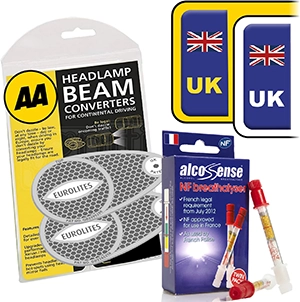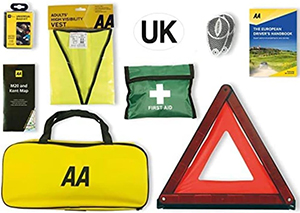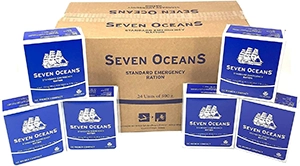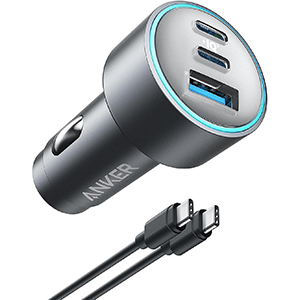Planning a road trip from the UK to Europe involves understanding various crossing options, country-specific requirements, and safety regulations. This guide will cover all essential details, focusing on driving regulations and necessary preparations to ensure a smooth journey.
Disclosure: We earn a commission if you make a purchase from one of our affiliate links, at no additional cost to you.
1. Crossing Options from the UK to Europe
1.1 Eurotunnel (Folkestone to Calais)
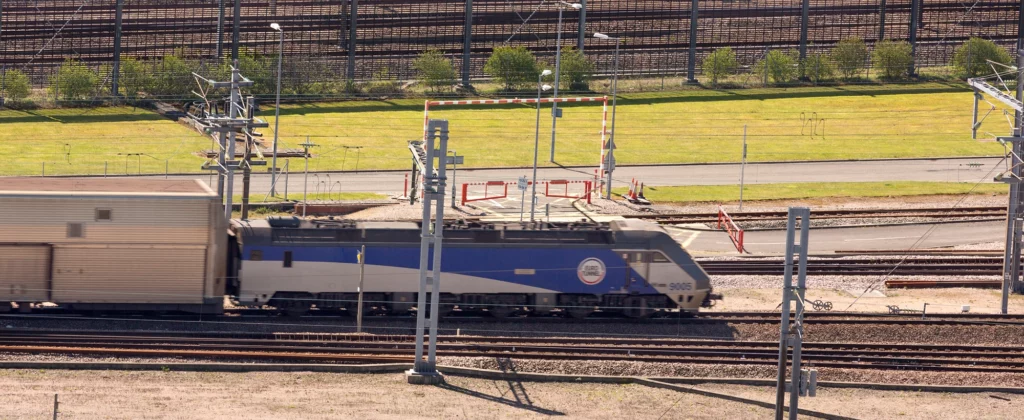
The Eurotunnel offers a fast and convenient way to cross from the UK to France. The journey from Folkestone to Calais takes about 35 minutes. It’s a preferred option for those looking to save time and enjoy the comfort of their vehicle throughout the trip. The Eurotunnel is efficient and reliable, with multiple departures daily, making it an excellent choice for travellers with flexible schedules. The booking process is straightforward, and the terminal facilities provide a range of amenities, including shops, restaurants, and rest areas, to ensure a comfortable wait before boarding.
Advantages of the Eurotunnel
- Speed: The Eurotunnel is the fastest way to cross the Channel with your vehicle.
- Convenience: Drive straight onto the train and relax in your car during the crossing.
- Frequency: Trains run frequently, offering flexibility in planning your departure.
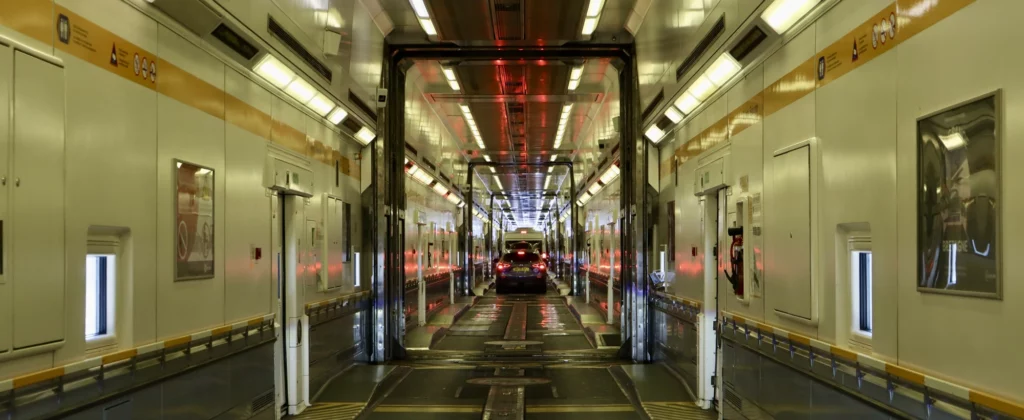
Tips for Using the Eurotunnel
- Booking in Advance: Book tickets early to secure the best rates. Visit the Eurotunnel Official Site for more information.
- Check-in Process: Arrive at least 30 minutes before departure for a smooth check-in process.
- Pet Travel: The Eurotunnel is pet-friendly, allowing you to bring your pets along for the journey.
1.2 Ferries
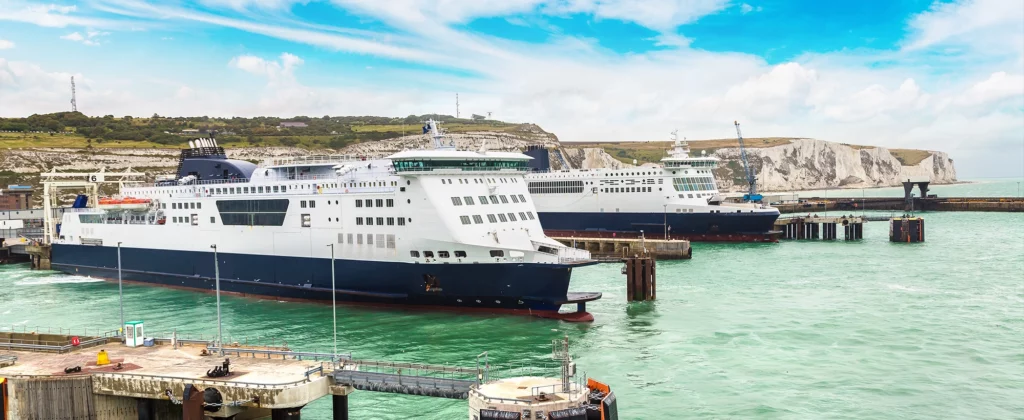
Ferry services provide a more relaxed and scenic option for crossing the Channel. They allow travellers to enjoy the journey with various onboard facilities, including dining, shopping, and entertainment.
- Dover to Calais/Dunkirk: This popular route is serviced by DFDS and P&O Ferries, taking around 90 minutes to cross the English Channel. Ferries on this route run frequently, offering flexibility for departure times. The port of Dover is easily accessible from London and other parts of the UK, and upon arrival in Calais or Dunkirk, travellers can quickly continue their journey into France or beyond.
- Portsmouth to Caen/St Malo/Cherbourg: Operated by Brittany Ferries, these routes provide various options to reach the northern coast of France. The crossings vary in duration, with options for day or overnight travel. The ferry ports in Portsmouth and France are well-equipped, ensuring a smooth transition from sea to road.
- Harwich to Hook of Holland: Stena Line offers this route, taking approximately 6.5 to 7 hours, ideal for those heading to the Netherlands. The overnight service allows travellers to rest and arrive refreshed, ready to start their European adventure.
- Hull to Rotterdam: Another convenient route for travellers in the northern UK, operated by P&O Ferries, with an overnight crossing option. This route is particularly useful for those planning to explore the Benelux countries and beyond.
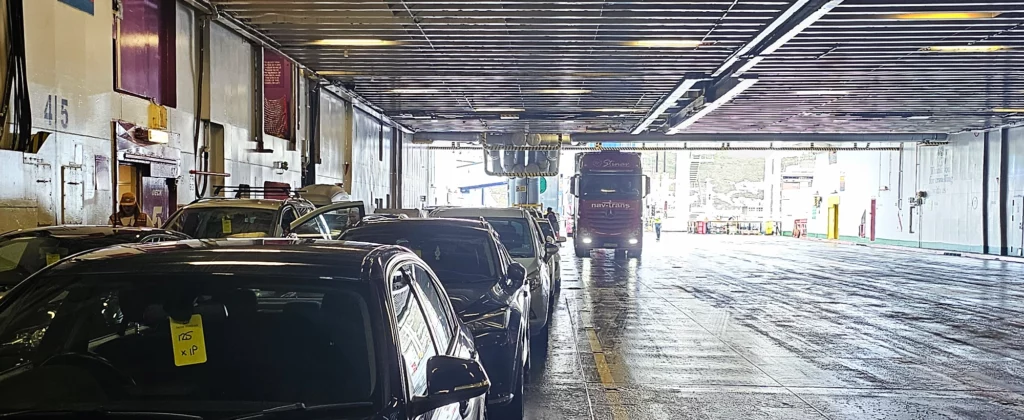
Advantages of Ferry Travel
- Scenic Views: Enjoy the picturesque views of the Channel.
- Comfort: Relax with onboard amenities including restaurants, shops, and lounges.
- Variety of Routes: Multiple routes to suit different travel plans and destinations.
Tips for Ferry Travel
- Arrive Early: Check-in at least 90 minutes before departure. Queues at check-in can be slow-moving.
- Onboard Entertainment: Take advantage of onboard entertainment options such as music and audiobooks to make the journey enjoyable.
- Secure Your Vehicle: Carefully follow all instructions given by the crew. Ensure your vehicle is properly parked and secure before heading to the passenger areas.
- Crossing times: The crossing from Calais to Dover usually takes between 60 and 90 minutes depending on and weather conditions and cargo weight. Plan ahead and consider having a meal or coffee on board.
2. Country-Specific Requirements
When driving in Europe, it is crucial to comply with local regulations, which can vary significantly from those in the UK. Below are key requirements for some popular destinations.
Here’s a quick speed conversion guide for common speed limits you’ll encounter in Europe:

2.1 France
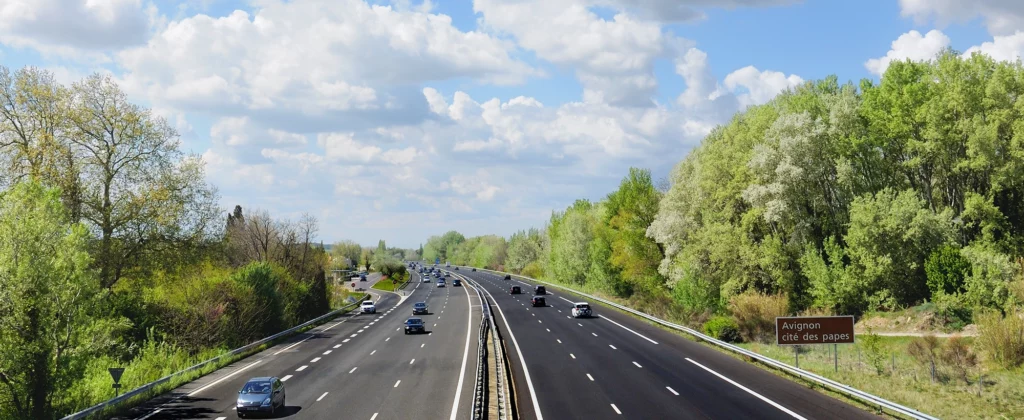
- Safety Equipment: You must have a warning triangle, high-visibility vests for all passengers, a first aid kit, and a breathalyser. Authorities recommend carrying spare headlight bulbs and a fire extinguisher.
- UK Sticker: A UK sticker is mandatory on your vehicle to identify it as being from the UK. Authorities no longer recognize GB license plates as valid.
- Speed Limits: Familiarise yourself with French speed limits: 130 km/h (≈81mph) on motorways, 110 km/h (≈68mph) on dual carriageways, 90 km/h (≈56mph) on other roads, and 50 km/h (≈31mph) in urban areas. Use Velocity GPS Dashboard as a speed converter to keep track of your speed throughout the trip.
- Toll Roads: Be prepared for toll roads (péages) across the motorway network. Payment can be made by cash or card. Consider using a toll tag for convenience. Visit Emovis Tag for more information.
France is known for its stringent driving regulations and requirements for safety equipment. Here’s what you need to know:
Includes 2 NF Certified AlcoSense Breathalysers, AA Eurolites Headlight Deflectors, and UK Number Plate Stickers for driving in France and Europe. Quick and easy compliance with simple instructions, ensuring safety and regulation adherence for your travels.
2.2 Belgium
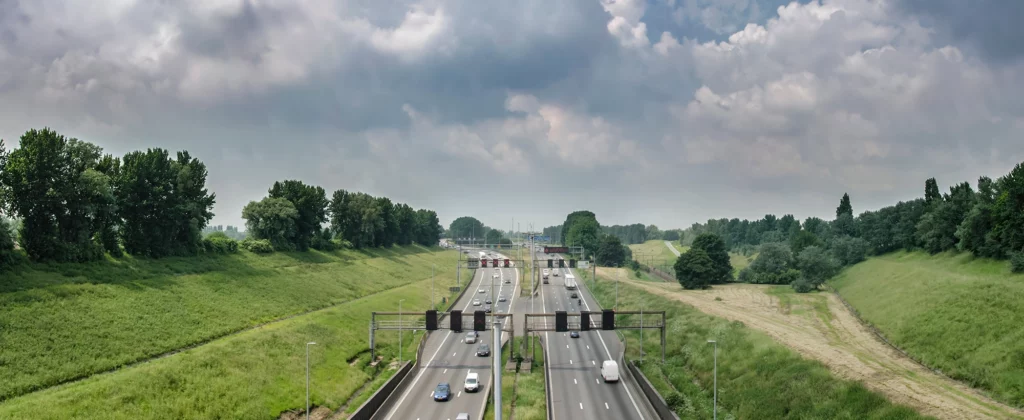
Belgium has similar requirements to France, with a focus on safety and compliance with local traffic laws.
- Safety Equipment: Similar to France, a warning triangle and high-visibility vests are mandatory.
- Speed Limits: 120 km/h (≈75mph) on motorways, 90 km/h (≈56mph) on other roads, and 50 km/h (≈31mph) in urban areas.
Driving Tips for Belgium
- Road Conditions: Be aware that some Belgian roads may have uneven surfaces.
- Language: Road signs may be in Dutch, French, or German, depending on the region.
- Traffic: Belgium has a high density of traffic, particularly in and around major cities like Brussels and Antwerp.
2.3 Netherlands
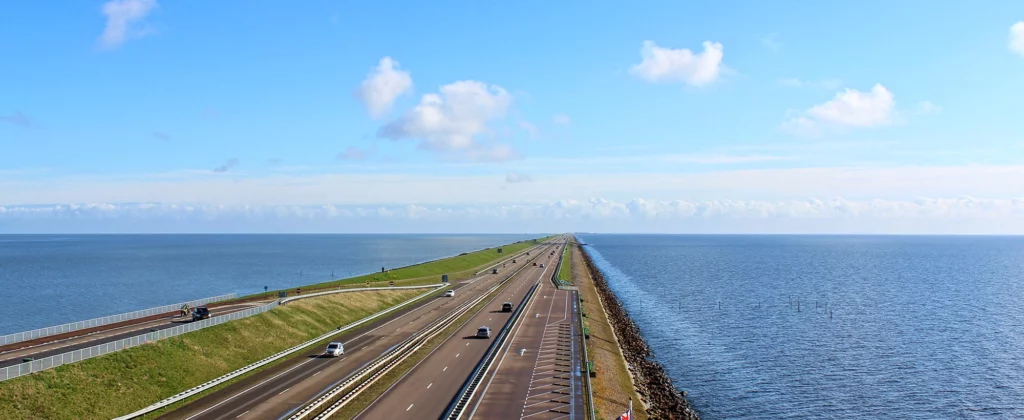
The Netherlands boasts beautifully well-maintained roads and efficient traffic management systems.
- Safety Equipment: Warning triangles are required. High-visibility vests are recommended.
- Speed Limits: 130 km/h (≈81mph) on motorways, 100 km/h (≈62km/h) on dual carriageways, 80 km/h (≈50mph) on other roads, and 50 km/h (≈31mph) in urban areas.
Driving Tips for the Netherlands
- Bicycle Lanes: Be mindful of bicycle lanes and the high number of cyclists, especially in urban areas, especially when turning and opening your door after parking.
- Roundabouts: Yield to traffic coming from the right when entering roundabouts. You will likely encounter unfamiliar road markings. Be extra vigilant to look out for cyclists, pedestrians, and trams when crossing lanes.
- Parking: Pay attention to parking regulations and use designated parking areas.

2.4 Germany
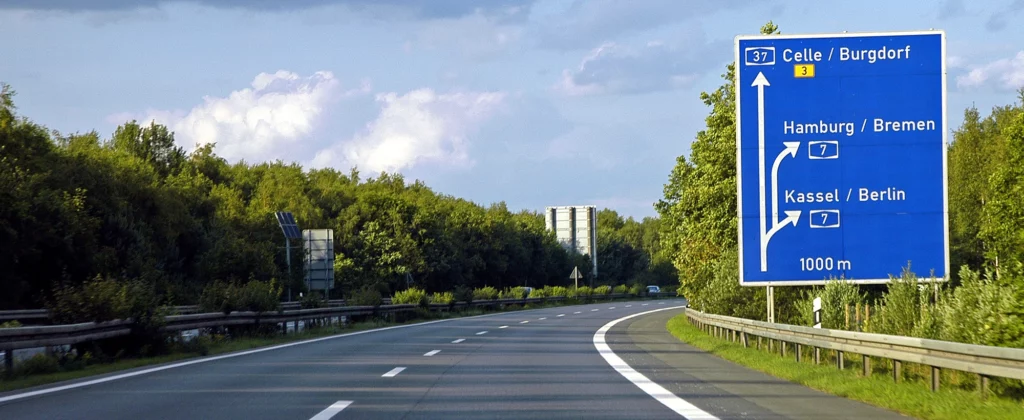
Germany’s autobahns are famous for having no general speed limit, but they still demand careful driving, particularly in unfavourable weather.
- Safety Equipment: A warning triangle, first aid kit, and high-visibility vests are mandatory.
- Speed Limits: Autobahns have no general speed limit, but 130 km/h (≈81mph) is recommended in unrestricted areas (national speed limit sign). Speed limits vary across autobahn routes; not all areas are unrestricted. 100 km/h (≈62mph) on other roads and 50 km/h (≈31mph) in urban areas.
Driving Tips for Germany
- Autobahns: While there is no general speed limit in the unrestricted areas, take care to drive at a speed that is safe for your vehicle, the road, and weather conditions. Speed limits vary so pay close attention to road signs. Take extra care when changing lanes at high speeds.
- Rest Areas: Use the frequent rest areas on autobahns to take breaks during long drives.
- Environmental Zones: Be aware of low-emission zones in cities, which may require a special sticker.
2.5 Spain
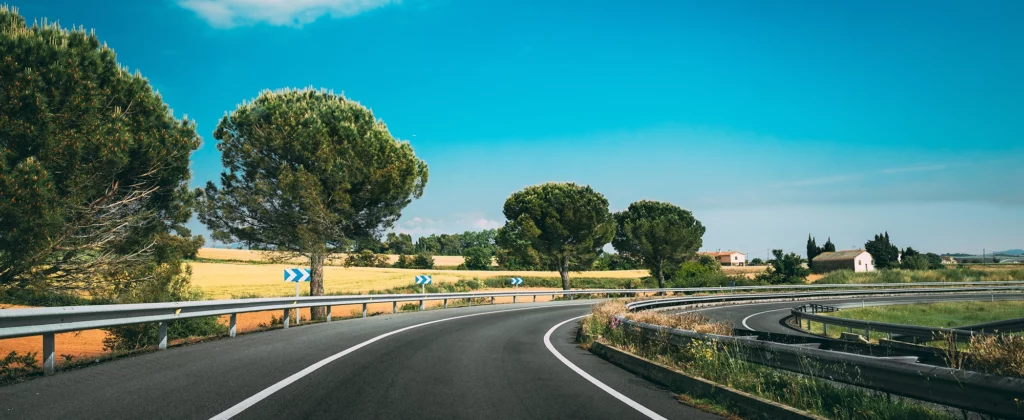
Spain offers a diverse driving experience, from bustling cities to tranquil countryside.
- Safety Equipment: Warning triangle, high-visibility vests, and spare bulbs are mandatory.
- Speed Limits: 120 km/h (≈75mph) on motorways, 90 km/h (≈56mph) on other roads, and 50 km/h (≈31mph) in urban areas.
Driving Tips for Spain
- Road Conditions: Spanish roads are generally in good condition, but rural areas may have narrower roads.
- Toll Roads: Prepare for toll roads, particularly on major highways.
- Road Signs: Familiarise yourself with Spanish road signs and traffic rules.
2.6 All Countries
Beam reflectors
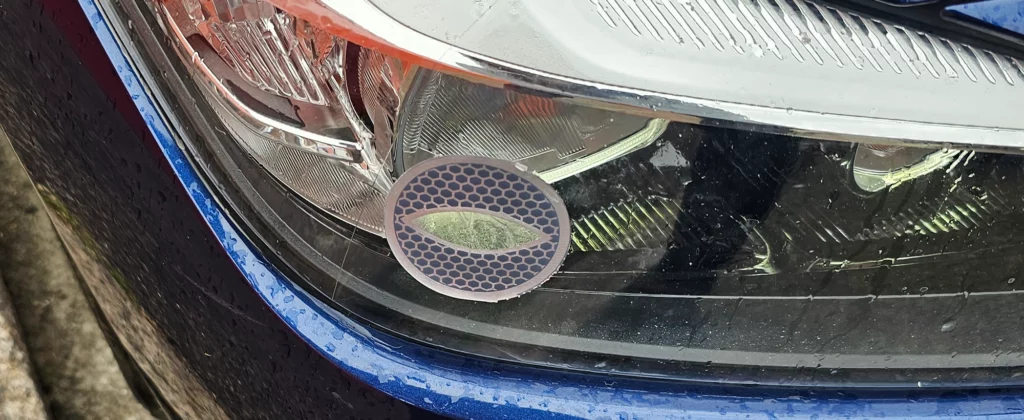
Car headlight are adapted to the side of the road that traffic drives on in the country they’re designed for. In the UK, vehicles drive on the left side of the road, while in most European countries, traffic drives on the right side. It is mandatory to install Beam Reflectors on your UK vehicle to avoid dazzling drivers in the oncoming lane when driving in European traffic.
Beam reflectors adapt to all kinds of vehicles and are included in most Euro driving kits. Be sure to carefully follow the manufacturers’ instructions (inside the pack or online) for placement on your specific vehicle make and model.
This essential driving kit for Europe includes emergency items (first aid kit, warning triangle, hi-vis vest, bulb kit), safety tools (headlight beam reflectors, UK plate), and convenience items (maps, AA European Driver’s Handbook). AA-brand products come in a compact, zipped storage bag.
3. Preparing Your Vehicle
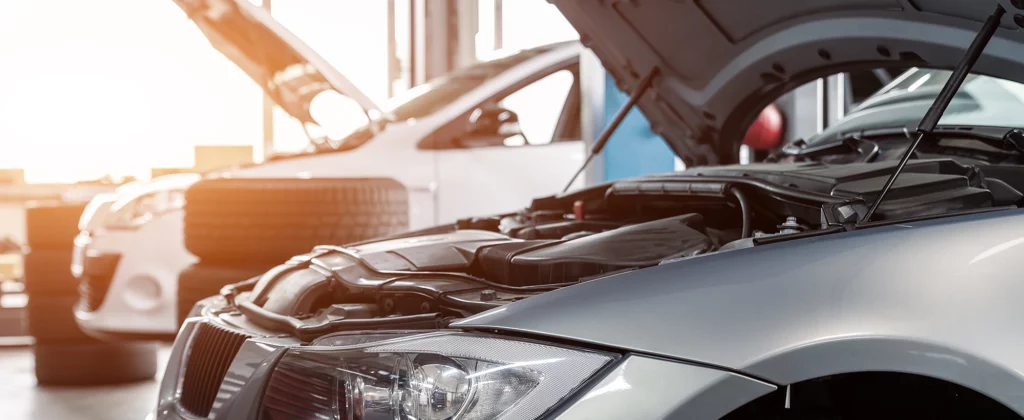
Before embarking on your journey, ensure that your vehicle is road-trip ready. Proper preparation can prevent unexpected issues and ensure a smooth trip. We highly recommend booking a vehicle inspection with your local garage to confirm your car is in top condition for an extensive adventure. These services help identify any underlying problems and ensure your car is safe and legal for the journey ahead.
- Maintenance Check: Have your vehicle serviced, checking the oil, brakes, tyres, and lights. A thorough checkup can prevent breakdowns and ensure your vehicle is in optimal condition for a long journey.
- Documents: Carry your driving licence, vehicle registration, insurance documents, and a European Accident Statement form. These documents are essential for legal compliance and handling any incidents that may occur. Download PDF copies of your insurance documents to your phone in advance or prepare printed copies, as authorities may prefer them.
- Insurance: Confirm with your insurance provider that your insurance covers driving in Europe. You can usually make temporary changes to your policy for the duration of your trip if necessary. Consider additional European breakdown cover to avoid any unexpected costs in case of vehicle issues.
- Navigation: Use a reliable GPS device or app with updated European maps. Familiarise yourself with local driving laws and road signs.
Additional Vehicle Preparations
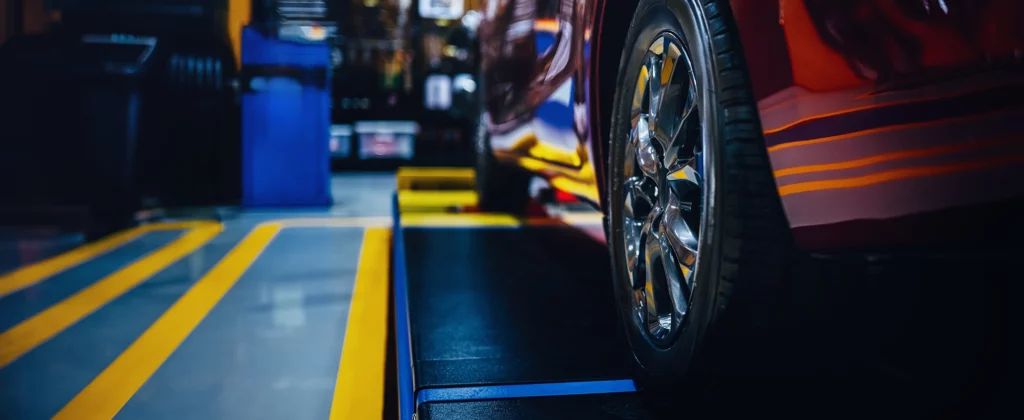
- Tyres: Check the tyre pressure and tread depth to ensure they are suitable for long distances and varying road conditions.
- Fluid Levels: Ensure all fluid levels (oil, coolant, brake fluid, windscreen washer fluid) are topped up.
- Spare Parts: Carry spare parts such as bulbs, fuses, and a spare tyre.
- Emergency Kit: Pack an emergency kit including a torch, batteries, blankets, and non-perishable food items.
The Seven Oceans 500g Emergency Food Rations, ideal for survival at sea, camping, and hiking, are vacuum-packed in airtight foil and a water-repellent box. Each pack provides 10,100 kJ (2,400 kcal) of energy, subdivided into 18 tablets in 9 bars. Lightweight and with a shelf life of at least five years.
4. Exploring European Destinations by Road
Driving across Europe offers a fantastic way to explore the continent’s diverse landscapes and cultures. Here are some highlights of scenic routes and must-see destinations that you can experience on your European road trip.
4.1 Scenic Routes in France
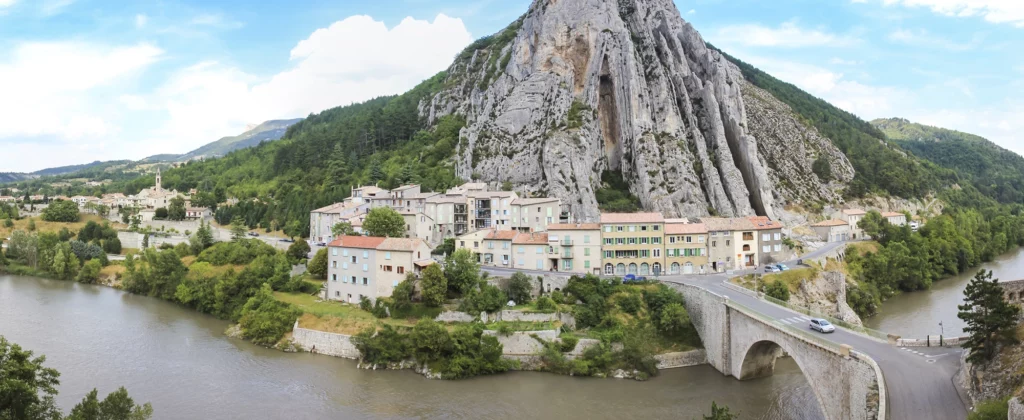
France boasts a variety of scenic routes, from coastal drives to mountain passes.
- Route Napoléon: This historic route runs from the French Riviera to the Alps, offering stunning views and charming villages along the way. It’s a great way to experience France’s diverse landscapes and rich history. Find more details on Tripadvisor.
- Alsace Wine Route: Drive through picturesque vineyards and medieval towns, enjoying local wines and cuisine. This route offers a relaxing journey through one of France’s most beautiful regions.
- Normandy Coast: Explore the D-Day landing beaches, historic towns, and dramatic cliffs of the Normandy coastline. This route boasts a rich history and beautiful coastal scenery.
4.2 Italy’s Iconic Drives
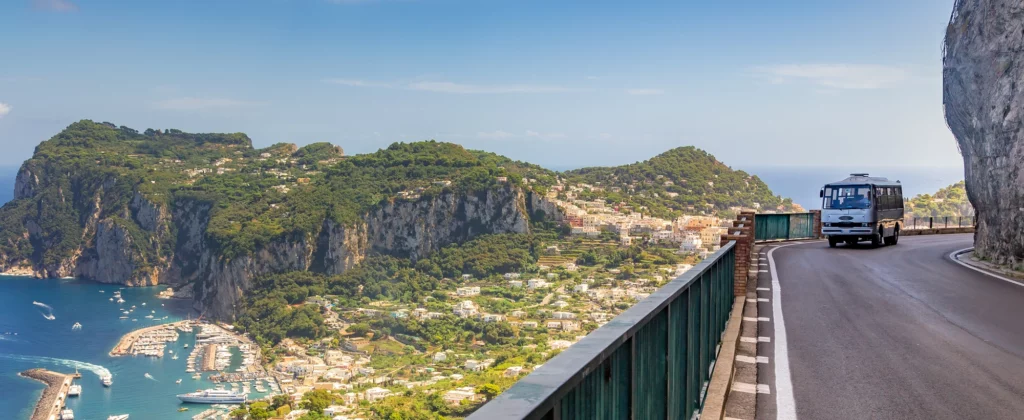
Italy’s diverse geography makes for some of the most beautiful and varied driving experiences in Europe.
- Amalfi Coast: This coastal drive offers breathtaking views of the sea, cliffs, and charming towns. The winding roads and scenic beauty make it a memorable drive.
- Tuscany: Explore rolling hills, vineyards, and historic cities like Florence and Siena. Tuscany’s scenic routes are perfect for leisurely drives and enjoying the region’s cultural heritage.
- Great Dolomites Road: Drive through the spectacular Dolomite mountains, experiencing dramatic scenery and picturesque alpine villages. This route is perfect for nature lovers and adventure seekers.
4.3 Spain’s Diverse Landscapes
From vibrant cities to serene countryside, Spain offers a variety of driving experiences.
- Costa Brava: This coastal drive features beautiful beaches, rocky cliffs, and charming towns. Ideal for a relaxed, scenic journey along the Mediterranean coast.
- Andalusia: Explore the rich cultural heritage of cities like Granada, Seville, and Córdoba, and enjoy the picturesque rural landscapes. Andalusia’s routes offer a blend of history and natural beauty.
- Picos de Europa: Drive through this mountainous region to experience rugged terrain, deep gorges, and lush valleys. This area is perfect for those looking for adventure and stunning landscapes.
4.4 Germany’s Picturesque Routes
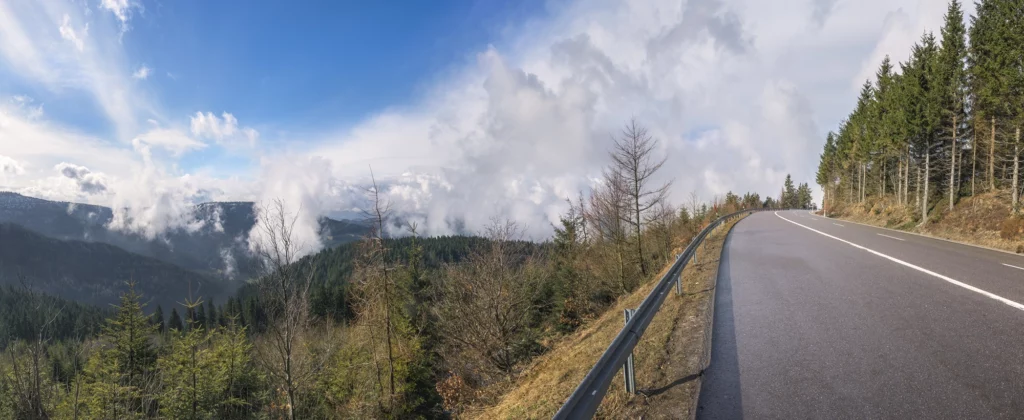
Germany is well known for its efficient roads and scenic routes that take you through beautiful landscapes and historic sites.
- Romantic Road: This route takes you through picturesque medieval towns, castles, and beautiful countryside, from Würzburg to Füssen. It’s one of Germany’s most famous scenic drives.
- Black Forest: Drive through dense forests, rolling hills, and charming villages, experiencing some of Germany’s most beautiful natural landscapes. This route is perfect for nature lovers.
- Mosel Valley: Follow the Mosel River, winding through vineyards and historic towns, with plenty of opportunities for wine tasting. This area offers a serene and scenic drive through one of Germany’s premier wine regions.
5. Additional Tips for a Smooth Road Trip
5.1 Pre-Trip Planning and Essentials
Embarking on a road trip across Europe requires careful planning and preparation to ensure a smooth and enjoyable journey. Here are some essential tips to help you get ready:
- Plan Your Route: Map out your journey in advance, considering rest stops, fuel stations, and overnight stays. Bear in mind that fuel stations and rest stops can sometimes be few and far between in some rural areas, so it is best to plan your stops in advance. Planning ahead can make your trip more enjoyable and less stressful. It is recommended to take a break after every two hours of driving.
- Carry food and water: Stay well hydrated throughout the journey to maintain high alertness.
- Currency: Carry some local currency for tolls, parking, and small purchases. Many banks now offer multi-currency cards that can save you paying conversion fees for each transaction.
- Mobile Roaming: Check your mobile plan for roaming charges; some providers still offer free roaming in the EU. Staying connected is important for navigation, communication, and emergencies.
- Accommodation: Book accommodations in advance, especially during peak travel seasons. Planning your stays ahead of time ensures you have a place to rest and reduces stress.
- Travel Insurance: Consider travel insurance that covers health emergencies and trip cancellations to add an extra layer of security.
- Device power essentials: Use a 12v Car Charger with choose cables of a suitable length to keep your phone well charged while navigating.
5.2 Road Conditions and Environments
Driving across Europe means encountering a variety of road conditions, environments, and even unfamiliar road signs. Here are some tips to prepare for different scenarios:
- Mountain Driving: Ensure your vehicle’s brakes and engine are in good condition before tackling mountain roads. Use lower gears when driving uphill or downhill to maintain control and reduce brake wear.
- Urban Driving: Be prepared for heavy traffic in major cities and plan your routes to avoid peak times. Familiarise yourself with parking regulations and consider using public transport or walking for city exploration.
- Rural Driving: Make sure your GPS or map is up to date, as rural areas may have fewer road signs and landmarks. Keep your fuel tank topped up, as petrol stations may be sparse in rural areas.
Experience powerful triple device charging with a 67W output across two USB-C ports and one USB-A port. The ultra-compact Anker 535 Car Charger, equipped with ActiveShield 2.0 safety, includes a 3.2 ft USB-C cable
Final Preparations
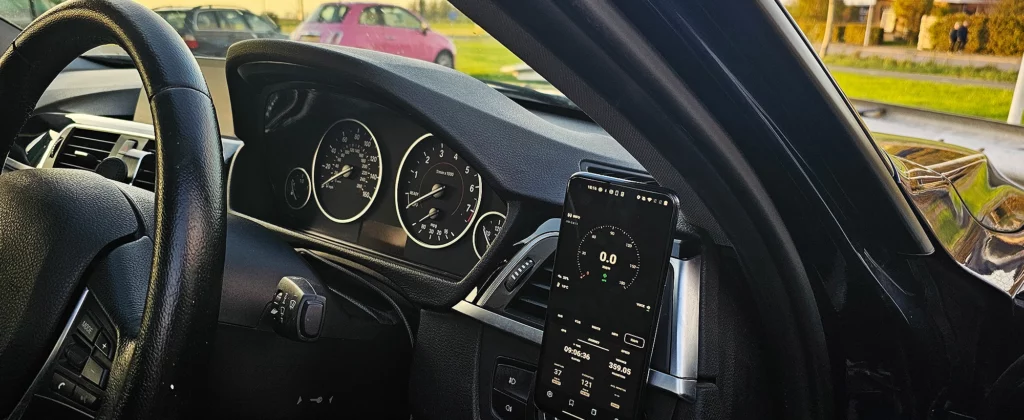
As your departure date approaches, double-check all preparations to ensure nothing is overlooked. Review your itinerary to make sure all planned stops, accommodations, and activities are confirmed. A well-organised itinerary helps avoid last-minute changes and ensures an enjoyable, smooth, and stress-free trip. Ensure your vehicle is stocked with all necessary supplies, including a spare tyre, jack, and toolkit. Being prepared for minor repairs can save time and reduce stress. Finally, let someone know your travel plans and provide them with a copy of your itinerary. Having someone aware of your plans adds an extra layer of safety.
By following these tips, you can ensure a safe and enjoyable road trip from the UK to Europe. We wish you pleasant journeys.
Make your trips more memorable. Record them with Velocity GPS Dashboard.
Learn more about Velocity GPS Dashboard and download on Google Play:
